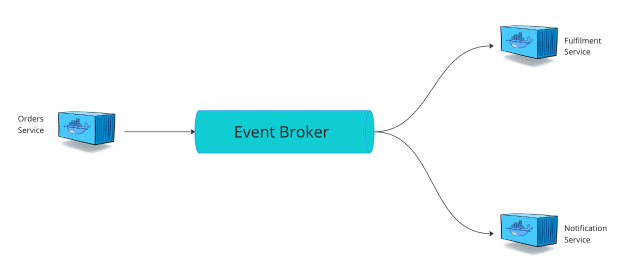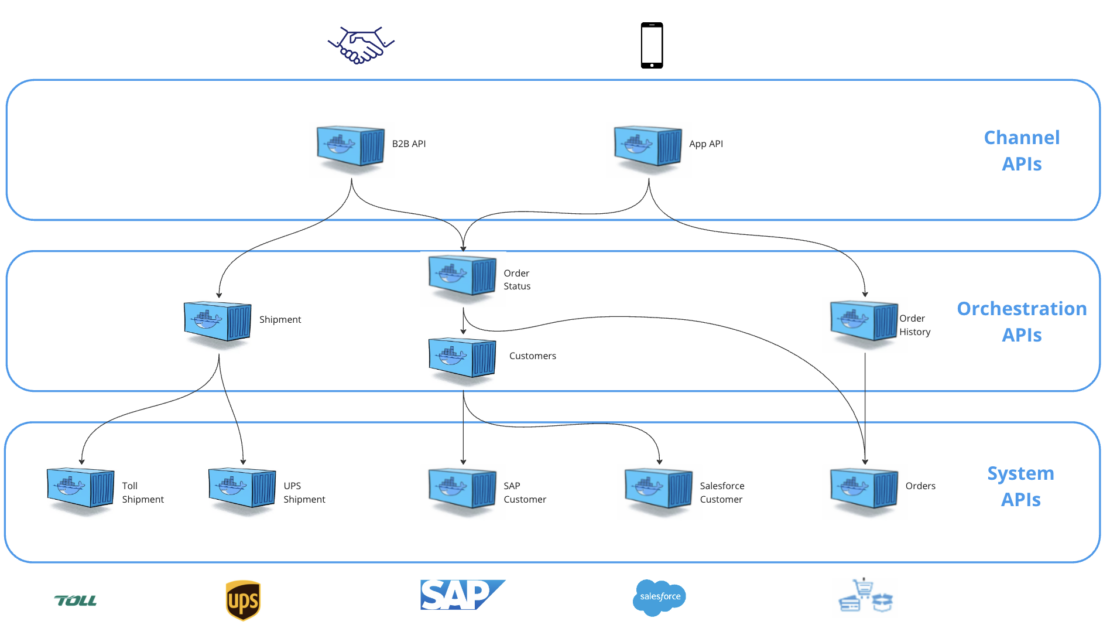In the ever-evolving software delivery landscape, containerization has emerged as a transformative force, reshaping how organizations build, test, deploy, and manage their applications.
Whether you are maintaining a monolithic legacy system, navigating the complexities of Service-Oriented Architecture (SOA), or orchestrating your digital strategy around application programming interfaces (APIs), containerization offers a pathway to increased efficiency, resilience, and agility.
In this post, we’ll debunk the myth that containerization is solely the domain of microservices by exploring its applicability and advantages across different architectural paradigms.

Containerization across architectures
Although containerization is commonly associated with microservices architecture because of its agility and scalability, the potential extends far beyond, offering compelling benefits to a variety of architectural styles. From the tightly integrated components of monolithic applications to the distributed nature of SOA and the strategic approach of API-led connectivity, containerization stands as a universal tool, adaptable and beneficial across the board.
Beyond the immediate benefits of improved resource utilization, faster deployment cycles, and streamlined maintenance, the true value of containerization lies in its ability to ensure consistent application performance across varied environments. This consistency is a cornerstone for reliability and efficiency, pivotal in today’s fast-paced software delivery demands.
Here, we will provide examples of how this technology can be a game-changer for your digital strategy, regardless of your adopted style. Through this exploration, we invite technology leaders and executives to broaden their perspective on containerization, seeing it not just as a tool for one architectural approach but as a versatile ally in the quest for digital excellence.
1. Event-driven architecture
Event-driven architecture (EDA) represents a paradigm shift in how software components interact, pivoting around the concept of events — such as state changes or specific action occurrences — as the primary conduit for communication. This architectural style fosters loose coupling, enabling components to operate independently and react asynchronously to events, thereby augmenting system flexibility and agility. EDA’s intrinsic support for scalability, by allowing components to address fluctuating workloads independently, positions it as an ideal candidate for handling dynamic system demands.
Within the context of EDA, containerization emerges as a critical enabler, offering a streamlined approach to encapsulate applications alongside their dependencies. This encapsulation guarantees that each component of an event-driven system functions within a consistent, isolated environment — a crucial factor when managing components with diverse dependency requirements. Containers’ scalability becomes particularly advantageous in EDA, where fluctuating event volumes necessitate dynamic resource allocation. By deploying additional container instances in response to increased event loads, systems maintain high responsiveness levels.
Moreover, containerization amplifies the deployment flexibility of event-driven components, ensuring consistent event generation and processing across varied infrastructures (Figure 1). This adaptability facilitates the creation of agile, scalable, and portable architectures, underpinning the deployment and management of event-driven components with a robust, flexible infrastructure. Through containerization, EDA systems achieve enhanced operational efficiency, scalability, and resilience, embodying the principles of modern, agile application delivery.

2. API-led architecture
API-led connectivity represents a strategic architectural approach focused on the design, development, and management of APIs to foster seamless connectivity and data exchange across various systems, applications, and services within an organization (Figure 2). This methodology champions a modular and scalable framework ideal for the modern digital enterprise.
The principles of API-led connectivity — centering on system, process, and experience APIs — naturally harmonize with the benefits of containerization. By encapsulating each API within its container, organizations can achieve unparalleled modularity and scalability. Containers offer an isolated runtime environment for each API, ensuring operational independence and eliminating the risk of cross-API interference. This isolation is critical, as it guarantees that modifications or updates to one API can proceed without adversely affecting others, which is a cornerstone of maintaining a robust API-led ecosystem.
Moreover, the dual advantages of containerization — ensuring consistent execution environments and enabling easy scalability — align perfectly with the goals of API-led connectivity. This combination not only simplifies the deployment and management of APIs across diverse environments but also enhances the resilience and flexibility of the API infrastructure. Together, API-led connectivity and containerization empower organizations to develop, scale, and manage their API ecosystems more effectively, driving efficiency and innovation in application delivery.

3. Service-oriented architecture
Service-oriented architecture (SOA) is a design philosophy that emphasizes the use of discrete services within an architecture to provide business functionalities. These services communicate through well-defined interfaces and protocols, enabling interoperability and facilitating the composition of complex applications from independently developed services. SOA’s focus on modularity and reusability makes it particularly amenable to the benefits offered by containerization.
Containerization brings a new dimension of flexibility and efficiency to SOA by encapsulating these services into containers. This encapsulation provides an isolated environment for each service, ensuring consistent execution regardless of the deployment environment. Such isolation is crucial for maintaining the integrity and availability of services, particularly in complex, distributed architectures where services must communicate across different platforms and networks.
Moreover, containerization enhances the scalability and manageability of SOA-based systems. Containers can be dynamically scaled to accommodate varying loads, enabling organizations to respond swiftly to changes in demand. This scalability, combined with the ease of deployment and rollback provided by container orchestration platforms, supports the agile delivery and continuous improvement of services.
The integration of containerization with SOA essentially results in a more resilient, scalable, and manageable architecture. It enables organizations to leverage the full potential of SOA by facilitating faster deployment, enhancing performance, and simplifying the lifecycle management of services. Together, SOA and containerization create a powerful framework for building flexible, future-proof applications that can adapt to the evolving needs of the business.
4. Monolithic applications
Contrary to common perceptions, monolithic applications stand to gain significantly from containerization. This technology can encapsulate the full application stack — including the core application, its dependencies, libraries, and runtime environment within a container. This encapsulation ensures uniformity across various stages of the development lifecycle, from development and testing to production, effectively addressing the infamous ‘it works on my machine’ challenge. Such consistency streamlines the deployment process and simplifies scaling efforts, which is particularly beneficial for applications that need to adapt quickly to changing demands.
Moreover, containerization fosters enhanced collaboration among development teams by standardizing the operational environment, thereby minimizing discrepancies that typically arise from working in divergent development environments. This uniformity is invaluable in accelerating development cycles and improving product reliability.
Perhaps one of the most strategic benefits of containerization for monolithic architectures is the facilitation of a smoother transition to microservices. By containerizing specific components of the monolith, organizations can incrementally decompose their application into more manageable, loosely coupled microservices. This approach not only mitigates the risks associated with a full-scale migration but also allows teams to gradually adapt to microservices’ architectural patterns and principles.
Containerization presents a compelling proposition for monolithic applications, offering a pathway to modernization that enhances deployment efficiency, operational consistency, and the flexibility to evolve toward a microservices-oriented architecture. Through this lens, containerization is not just a tool for new applications but a bridge that allows legacy applications to step into the future of software development.
Conclusion
The journey of modern software development, with its myriad architectural paths, is markedly enhanced by the adoption of containerization. This technology transcends architectural boundaries, bringing critical advantages such as isolation, scalability, and portability to the forefront of application delivery. Whether your environment is monolithic, service-oriented, event-driven, or API-led, containerization aligns perfectly with the ethos of modern, distributed, and cloud-native applications.
By embracing the adaptability and transformative potential of containerization, you can open your architectures to a future where agility, efficiency, and resilience are not just aspirations but achievable realities. Begin your transformative journey with Docker Desktop today and redefine what’s possible within the bounds of your existing architectural framework.
Learn more
- How to Stuff Monolithic Applications Into a Container (DockerCon 2023)
- Subscribe to the Docker Newsletter.
- Explore Docker Desktop.
- Join the Docker community.
- Skill up with Docker training.

